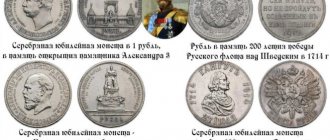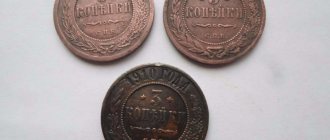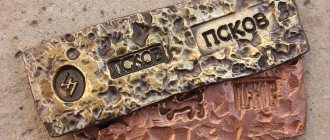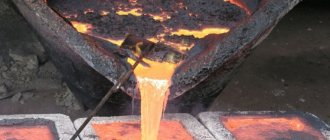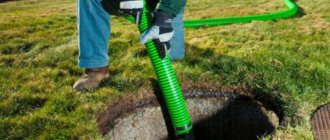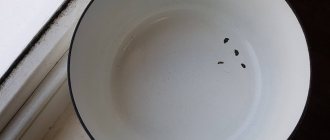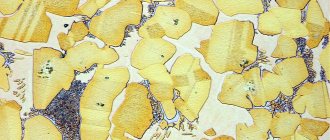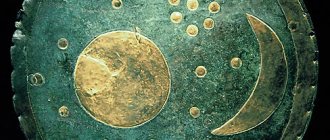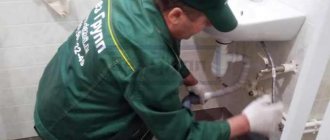An alloy of aluminum and bronze was widely used during the Soviet era to make coins. Today, many specimens have ended up in private collections of numismatists. Periodically, such products require cleaning, and for this process to be effective and safe, it is necessary to have information about the methods and methods of cleaning aluminum bronze coins.
Common problems include: deposits of dirt, dust, traces of oxidation, and the formation of a grayish film on the surface of the coin.
Simple and gentle methods
Soap solution
An alloy of aluminum and bronze can be placed in a thick soap solution for a long time. If there is no serious contamination on the coin, then no further manipulations will be required after removing it from the container with soapy water.
Lemon acid
More complex cases can be cleaned using citric acid, which is diluted with water in a ratio of 1:2 (one part acid and two parts water). The coin placed in the solution is regularly turned over to avoid damage to the coating.
Coca-Cola (or equivalent)
You can try the Coca-Cola cleaning method. The coin is placed in soda for a week; after the period has expired, it is washed under running water to remove remaining dirt particles.
Vinegar 9%
Another simple and affordable cleaning method is to use table vinegar diluted with water. Take two tablespoons of vinegar per glass of water. The coin should be dipped into the resulting essence for three minutes, after which you can wipe it with soda powder.
Cleaning bronze items – is it really necessary?
Many people do not know whether it is necessary to clean bronze products at all, be they coins or any figurines or dishes. It is important to take into account that the condition of the products depends on their age - many coins cast from bronze are covered with a thin film, which can be brown or green. If the products are characterized by an even structure, there are no corrosion defects or visible damage, there is no need to clean the coins - such a film acts as a natural protection.
If you start cleaning coins, you will damage the natural protection, which can completely ruin the appearance of the coins and, naturally, reduce their price. If you want to tidy up items covered with film, just gently wipe the coins with soapy water and rinse in bottled water - this will help rid bronze moments and figurines of grease stains, a layer of dust, and fingerprints.
Important: coins should not be rubbed forcefully, especially if the items are too old. This may cause the pattern to change.
But if you decide that your product collection requires a makeover, we will tell you how and with what to clean bronze products and aluminum bronze.
Aggressive cleaning methods
Brush and soda
For those who are not afraid to take a risk and resort to a mechanical method of getting rid of dirt, it is recommended to use a suede brush. For severe stains, you can take crushed baking soda powder, apply it to a coin and rub it with a brush.
This method may cause scratches on the surface. If the item previously had microcracks, then the stuck particles of soda will significantly reduce the value of the collectible item - it’s worth taking this into account.
Household chemicals
A bath cleaner can be used to get rid of stubborn dirt, but it must first be diluted in water and only then wipe the surface of the coin with the composition, and then rinse under running water. You can dip a coin in solutions of household chemicals for two minutes, no more.
Use of aggressive chemistry
The most effective method for cleaning bronze-aluminum coins, however, it is also the most dangerous.
- Firstly, such products cannot be used in concentrated form.
- Secondly, not every collector knows what proportions and time of application should be observed.
- Thirdly, if you handle aggressive chemicals carelessly, you can get a burn to the skin and mucous membrane of the nose and eyes.
Another disadvantage is the difficulty in finding the necessary funds. Not all chemicals are commercially available.
Cleaning coins using electrolysis
This method will appeal to fans of science experiments. The coin is attached to a negative charge, and the positive charge is connected to a metal object. The system is placed in a saline solution and when a current passes through the coin, the cleaning mechanism is started accordingly.
When using this method, do not forget about safety rules.
Cleaning coins using electrolysis
Cleaning coins using electrolysis
Most people have not forgotten what electrolysis is since their youth. This method can be an excellent assistant for cleaning collectible coins, the main thing is to remember two rules:
- Follow safety rules when working with electricity.
- Work out this technology first on modern coins, so as not to spoil more valuable coins.
To clean coins by electrolysis, you need to select a power supply with a capacity of about 6-12 V (this can be any phone charger) with two crocodile clips connected, a metal object, clay or glassware, as well as a saline solution (one teaspoon of salt per liter of water).
The process is not too complicated. One clamp (“-”) is attached to a coin and the other (“+”) is attached to a steel object. After which the coin and the steel object are dipped into a pre-prepared bowl with a salt solution, then the power supply is connected to the outlet.
The end result will be visible almost immediately; the solution will immediately begin to darken due to the breakdown of dirt and oxide. After finishing the quick “bath,” your sample should be thoroughly rinsed under running water and dried.
Cleaning aluminum coins by electrolysis is not as scary as many imagine, you just need a little attention and compliance with safety rules.
What is prohibited in cleaning aluminum bronze coins?
There are several prohibited cleaning products that are sure to harm the rarity:
- kaol;
- brasso;
- iodine.
There are precedents when it is impossible to completely clean a coin from contamination, in which case it is better to leave everything as is and not take the unjustified risk of damaging the exhibit.
Among other tips for choosing a cleaning method, they recommend: if the coin is heavily soiled, if the coin costs more than one hundred dollars, stop doing it yourself and entrust the matter to a professional.
Options for silver
Cleaning coins at home without the proper skills and experience is fraught with obtaining a completely opposite result from what was intended. It will be impossible to correct the consequences later, so it is better to initially entrust this matter to restorers, which is also good if you receive subsequent professional advice on storage and care.
- Toothpaste. You will need toothpaste without abrasive particles, otherwise you may cause minor scratches. Rub the coins with enough paste and wipe with a clean, soft cloth. Toothpaste is good for cleaning silver, but it will not cope with severe and long-standing stains.
- Ammonia. Pour ammonia (10% solution) into a glass or any other glass container so that the products can be completely immersed. Leave for 20-30 seconds. Remove, wipe, rinse with water and dry. Repeat if necessary.
- Salt and foil. A simple way to quickly clean silver of any contaminants. To do this, cover the bottom of a plastic container with foil, dilute a mixture of water and fine salt on it in a 2:1 ratio. Place coins in the solution, close the edges of the foil and leave for 30-60 minutes. In case of heavy contamination, the time can be increased. Next, remove and rinse well. Never rub salt on silver coins or press them, otherwise scratches may appear.
- Vinegar. You can add shine to your collection items by wiping them with a cloth soaked in 9% table vinegar. The process will go faster if you warm the vinegar a little.
- Trilon-B. This aqueous solution for cleaning metal surfaces is also suitable for cleaning low-grade silver coins. Rub the item with a soft brush soaked in the product, then rinse and dry. If you purchased the substance in powder form, then you need to dissolve it in a glass of hot water and immerse the coins in it for 3-4 minutes. Remove them with tweezers, rinse and dry.
- Soda and ammonia. At home, cleaning coins from greens with a mixture of ammonia and soda is effective. Lightly rub the banknote with the mixture. But the method is absolutely not suitable for rare antique coins, because soda is an abrasive product, it is better to choose a more gentle option.
- To clean USSR coins, prepare a mixture of ammonia, soda and toothpaste without abrasive particles. After treatment, clean the item with a soft toothbrush, rinse, and dry.
Is it acceptable to clean bimetallic coins at home?
Most collectors do a great job cleaning coins without outside help. Having simple means at your disposal, you can get rid of stubborn dirt almost free of charge.
The main conditions are the proper selection of cleaning products and compliance with safety precautions when working with acids and abrasives.
You should definitely figure out which cleaning method is suitable for a particular metal or alloy. If we are talking about a bimetallic coin, where different metals were used in production, then choose a cleaning agent suitable for both materials.
Conclusion: Bronze-aluminum coins can be successfully cleaned at home.
4 more taboos
When looking for a way to polish coins and give them shine and shine, it is important not to overdo it. Careless handling of tools or cleaning agents can lead to damage to precious items. To prevent this from happening, you need to remember four taboos.
- Use of strong abrasives. If the coin is valuable, do not use washing powder, soda or other harsh substances for cleaning. This may cause scratches and damage to the pattern.
- Boiling damaged products. If there are cracks or signs of corrosion, do not expose the product to high temperatures.
- Use of dangerous methods by beginners. If you are not a professional in numismatics, you should not clean coins with electrolysis or harsh chemicals.
- Prolonged exposure to cleaning products. If you expose a coin to substances longer than specified in the instructions, this may lead to damage to the structure of the product.
If you are just starting your journey as a numismatist, remember that cleaning coins at home cannot return them to their perfect original appearance. Therefore, if you have valuable specimens on hand, it is important to protect them from darkening and contamination. Before hiding the product in the organizer, thoroughly wipe it with alcohol and lubricate it with Vaseline.
woman365.ru
As with the winter test of the Tornado coil, I will not be original in the method of cleaning Soviet aluminum bronze coins. I saw this method once in a video clip on a popular video hosting site. I immediately liked the method for its simplicity and effectiveness, so if possible, I decided to repeat it and share the result with my reader.
One day, wandering between the shelves in a supermarket, the object that was used to clean yellow coins in the video caught my eye. This is a shoe brush. But it is not simple - its inner part of the bristles is made of brass. These bristles are the main element that helps us get rid of plaque on the yellow field of the coin.
Let me remind you: Soviet kopecks made of aluminum bronze in denominations 1, 2, 3, 5 were issued from 1926 to 1957. As we can see: the period is quite long, so such coins are often found in the mine. I like the yellow color of these coins, so they are my favorite.
So, the author of the video advised that before cleaning the pennies with a shoe brush, wet them. I’ll say right away that this is so that the dirt softens a little and makes it easier to clean off. But, since I am impatient, I, as a rule, do not soak, but immediately clean the coins, adding a little soap.
This time I will have a pair of 2 kopecks as a prototype. 1955 and 56 years of release.
These coins were found using a metal detector already this year, so they’re fresh.
Cleaning two copies took about five minutes. The result is in the photo below:
Personally, I'm pleased with the result. Pennies cleaned in this way look beautiful, even more natural than after polishing. Since brass is softer than a bronze alloy, there are no scratches on the field of the coin. The author of the video even provided pictures from under a microscope - there are no scratches.
What about other coins?
But I wondered what coins made from other metals and alloys would look like after cleaning this way. For the experiment, I took 50 kopecks from 1992 (should be made of brass), 50 kopecks “50 years of Soviet power” (copper-nickel alloy) and 5 kopecks from 1869 (should be made of copper). This is how they were before cleaning:
Modern and Soviet kopeks were dug this year, and from copper last year.
I worked with a brush along the field of coins a little longer than the first time and the result is in the photo below:
As we can see: I was never able to clean the 1992 penny to a shine - I didn’t have enough strength; 50 kopecks of advice - “neither fish nor fowl”; and a 19th-century coin that had apparently been barbecued several times had only lost dust.
So: the method of cleaning with a shoe brush only works well for pennies made of aluminum bronze.
vremenami.com
Products for cleaning bronze products
How to clean bronze using affordable means? You may need:
- juice squeezed from several lemons;
- sodium bicarbonate (this product, better known as “baking soda,” is found in almost every home);
- Wheat flour;
- regular table salt;
- vinegar;
- 10% ammonia solution (it will probably be found in every home medicine cabinet);
- oxalic acid, which can be purchased at any pharmacy;
- chicory, ground to powder;
- acetone (you can find it at a hardware store);
- sulfuric acid;
- chalk;
- wood sawdust.
When cleaning bronze, brass and other alloys, the following auxiliary and protective equipment must be used:
- gloves that will protect your hands;
- napkins;
- a small piece of woolen fabric;
- cotton rags;
- container in which all ingredients will be mixed.
